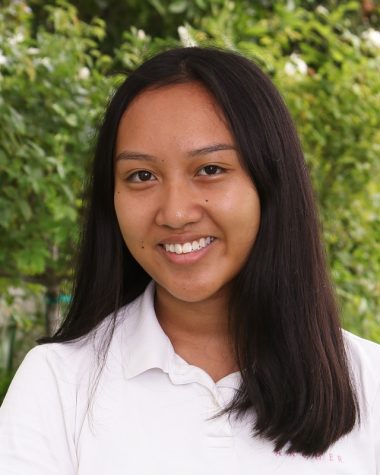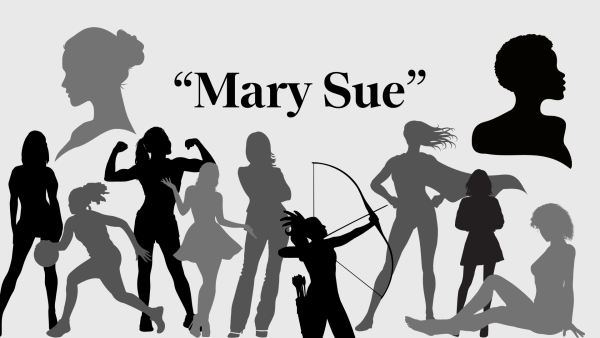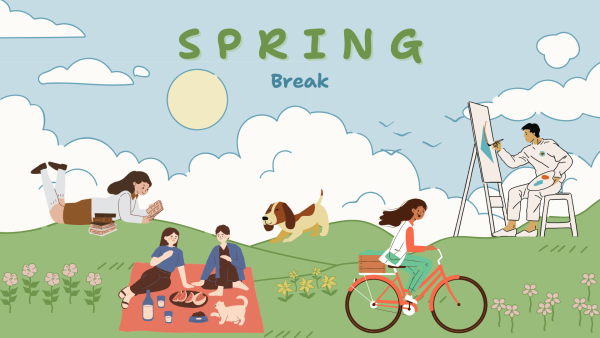Op-Ed: Accessibility: You can never have too much
Photo credit: Cat Oriel
Junior Natalie Goldstein’s scooter sits in the hallway while Goldstein is in class. During her injury, Goldstein had to use a scooter to get around the school. “[In smaller classrooms], I have to leave my scooter outside. I have to hop around and use the desks to move,” she said.
Squeezing through crowded hallways, running out of breath after climbing three flights of stairs, walking while texting and accidentally swinging a door open, hitting a helpless middle schooler (sorry!). These are a few daily occurrences during an Archer passing period.
But how much more challenging would this period be for someone with physical mobility challenges at Archer?
I thought about what their normal day might look like: entering the school through the back, as the front lacks a ramp, and having to use the dark and slow elevators to access all three stories.
I began to wonder if anyone with permanent mobility challenges has applied to Archer but couldn’t attend due to accessibility concerns, or what might happen if a current community member had to use a wheelchair.
How would it be for people in those situations to get around the campus as it is?
According to Director of Admissions Felicia Paik, a permanent wheelchair user hasn’t applied during her time at Archer.
The Americans with Disabilities Act doesn’t cover private schools, but Archer uses it as a standard for the campus and wouldn’t discriminate against a wheelchair user who should choose to apply, according to Paik.
“Should we have an applicant with the need for a wheelchair, we would assess her candidacy like we would anybody else’s,” she said.
Dean of Students Travis Nesbitt says administration and professionals would work with the student to ensure their success at school.
“We’re lucky to be a small enough school where we can develop an individualized plan for a student. I [think] it needs to be clear to current and potential students about accommodations we’re able to make,” Nesbitt said.
Some students with injuries requiring crutches, braces or a scooter have faced challenges with Archer’s historic building, but never permanently. Natalie Goldstein ‘18 currently has a boot and uses a scooter to make her way around Archer.
“I’m mobile and on wheels, but it still takes time to get from place to place,” Goldstein said. “[In smaller classrooms], I have to leave my scooter outside. I have to hop around and use the desks to move. It’s a little bit harder.”
Junior Alexandra Chang had a spinal fusion surgery in 2016, causing her to miss two-and-a-half months of school. Unlike Goldstein, Chang did not need a scooter or crutch, and but she did face many challenges navigating the campus when she returned, as she could not carry more than five pounds at a time.
“When I came back I wasn’t able to walk up stairs for a long time, so I mainly took the elevators. I found it to be easy for me, maybe because I wasn’t on crutches or something like that,” Chang said.
Chang said her experience dealing with her injury was “positive” due to good communication between her, administration and teachers.
“I had to go back and forth to my locker between classes, but my teachers were really considerate and let me have more time during passing periods,” she said. “My teachers were incredibly supportive and understanding throughout the duration of my injury, and they continue to be. The collaboration between teachers and administrators to accommodate specific students is a strength.”
Overall, Archer is an accessible, understanding place. Girls with injuries have elevator access, extra time for passing periods and assistance managing work when recovering at home. However, Archer can continue to improve and be more accessible for students with permanent physical disabilities or injuries.
Possibilities could include adding door push buttons, building a front ramp, adding Braille to the signs outside of classrooms and improving the speed and design of the elevators. Access will be a challenge for people with disabilities to think about, but the new Archer Forward campus will incorporate more accessibility, according to Nesbitt.
The school should be prepared to alter select practices since accessibility extends further than the actual space. According to Nesbitt, when schools are successful for those with physical disabilities, it says more about culture than the facility itself.
“Sometimes we take over spaces in ways that make mobility difficult, and we would have to change our practices around that. Like how we set up a room and tables, do group work or lounge in the hallway,” Nesbitt said.
Since no students, including myself, have ever used a wheelchair at Archer, I can’t say how the experience would truly be. Perhaps the campus is already adequate, but what if it isn’t?
It is far better to stay proactive and plan ahead, rather than to have to be reactive.
Ability is an example of one of the main cultural identifiers. Since Archer’s a proudly diverse and accepting institution, the community’s inclusivity extends to everyone regardless of how they identify.
It’s likely that a wheelchair user could apply as a student, teacher or administrator soon. We can help create a better space that allows everyone to be a part of the great community.

Cat Oriel joined the Oracle staff as a contributing writer in 2015, was promoted to Voices Editor in 2017 and is now the News and Features Editor. She...



![Junior Natalie Goldstein's scooter sits in the hallway while Goldstein is in class. During her injury, Goldstein had to use a scooter to get around the school. "[In smaller classrooms], I have to leave my scooter outside. I have to hop around and use the desks to move," she said.](https://archeroracle.org/wp-content/uploads/2017/03/CAT-900x546.jpg)







Alexandra Brown Chang • Mar 13, 2017 at 4:08 pm
Awesome article, Cat! This was really well researched <3 Great work!
Anna Brodsky • Mar 13, 2017 at 4:07 pm
Amazing op-ed! You researched the topic so thoroughly, and you’re very thoughtful in your commentary. Great job
Nelly Rouzroch • Mar 12, 2017 at 8:22 pm
Great article Cat! You made me think about the campus in a whole new way. Loved it!